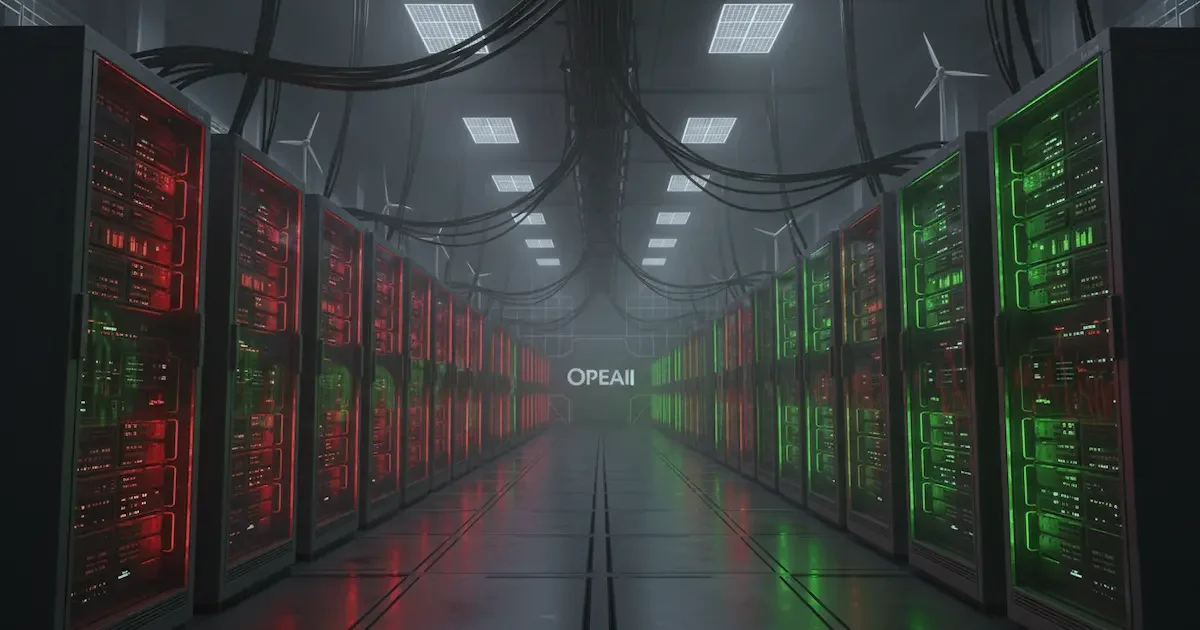Here’s what just happened in AI land: OpenAI inked a long-term chip supply deal with AMD to supercharge its data-centre buildout—while loudly saying, “Relax, Nvidia, we’re not breaking up.” This is less a love triangle and more a polyamorous compute strategy. Translation: OpenAI wants all the GPUs it can get, from whoever can ship them at scale, on time, and at the right price.
The deal in plain English
OpenAI and AMD signed a multi-year, multi-generation partnership that will see OpenAI deploy 6 gigawatts of AMD Instinct GPUs, starting with 1 GW in H2 2026 based on AMD’s upcoming MI450 series. That’s an absurd amount of compute—think several hyperscale data centers stitched together with fiber and prayer. AMD and OpenAI are calling it a strategic relationship that spans current and future GPU generations.
There’s also a financial kicker: OpenAI received warrants to buy up to ~10% of AMD (around 160 million shares) at a nominal price if performance milestones are hit. Markets didn’t miss the memo; AMD’s stock jumped hard on the news.
“Complement, not replace” — Altman’s Nvidia message
Immediately after the announcement, Sam Altman clarified on X that the AMD partnership is incremental to OpenAI’s ongoing work with Nvidia—not a replacement. In his words, OpenAI plans to increase Nvidia purchasing over time. That’s not just diplomacy; it’s a practical admission that today’s frontier AI depends on a buffet of supply.
Why this matters (beyond chip-nerd Twitter)
1. Compute scarcity is the new oil shock. Training and serving large models require mountains of GPUs; scarcity has been the choke point. Locking in multi-year access to AMD silicon gives OpenAI a second engine, without taking its foot off the Nvidia pedal.
2. Competition = leverage. A credible AMD pipeline gives OpenAI bargaining power on price, delivery schedules, and custom features—while applying pressure on Nvidia’s margins and roadmap pacing. Analysts widely see this as AMD’s step up from “viable alternative” to “co-lead supplier.”
3. The scale is bonkers. Six gigawatts dedicated to AI inference/training is utility-grade infrastructure. The first 1 GW arrives only in 2026, which signals that AI demand isn’t a 2025 fad; it’s a multi-year, power-hungry buildout.
Reading between the lines: timing, risk, and roadmap
· Timing risk: The heavy lift starts in H2 2026. If you were expecting instant relief to GPU shortages, that’s not this. It’s a medium-term bet lining up with OpenAI’s next model cycles. Slippage on MI450 production, packaging, or power/cooling constraints would push the benefits out further.
· Ecosystem lock-in vs. portability: Nvidia’s CUDA stack remains the 800-pound gorilla for developers. AMD’s ROCm has improved (MI300 → MI350 → MI450 era), but cross-vendor portability at OpenAI scale is a real engineering project. Expect OpenAI to invest in software layers that abstract vendor differences to avoid being cornered. (This is an inference based on the multi-generation language both sides used.)
· Financial engineering: Those AMD warrants are a strategic hedge. If AMD executes and its valuation climbs, OpenAI benefits directly—effectively subsidising future compute. If not, OpenAI still gets diversification. Markets already priced in a big chunk of optimism.
What this means for India
1. Cloud regions and latency: If OpenAI’s AMD capacity lands partly in regions accessible from India (think Azure/colocation partners), we could see faster, cheaper GPT access for Indian enterprises, especially for inference-heavy workloads like customer support and search. (OpenAI hasn’t named regions yet; consider this directional.)
2. Chips → power → grid: Six gigawatts globally hints at more AI-ready power buildouts. India’s data-centre boom—especially in Maharashtra, Tamil Nadu, and Uttar Pradesh—will need renewables, grid upgrades, and cooling tech to stay cost-effective. This deal reinforces that AI growth is now an energy story as much as a silicon story. (Inference, aligned with the scale disclosed.)
3. Vendor leverage for Indian buyers: Indian startups and IT integrators negotiating GPU capacity may find AMD capacity easier to book (and possibly cheaper) over the next 12–24 months as AMD’s share rises. Expect more ROCm-compatible tooling in the open-source community and Indian SI playbooks.
The Nvidia question you’re dying to ask
Is OpenAI moving away from Nvidia? No. It’s moving toward more compute, full stop. Nvidia remains the performance and ecosystem benchmark; AMD is the fast-rising counterweight with attractive availability and an accelerating roadmap. OpenAI’s statement—and Altman’s tweet—basically say: we’ll take both, thanks.
What to watch next
· MI450 real-world perf/watt vs. Blackwell and its successors. If AMD closes or beats the gap on training/inference efficiency, developer migration will speed up.
· Software stack maturity. ROCm compatibility, compiler/tooling polish, and model portability will decide how quickly OpenAI (and the rest of us) can fluidly mix vendors.
· Where the first 1 GW goes. Location choices will hint at latency, regulatory strategy, and energy mix.
Bottom line
OpenAI isn’t picking sides; it’s picking scale. The AMD deal is a bet that the future of AI isn’t a single-vendor lane. It’s a multi-vendor highway with more lanes opening in 2026 and beyond. For developers and businesses in India, this likely means better access, more price competition, and a healthier ecosystem—once the concrete (and the substations) are poured.
